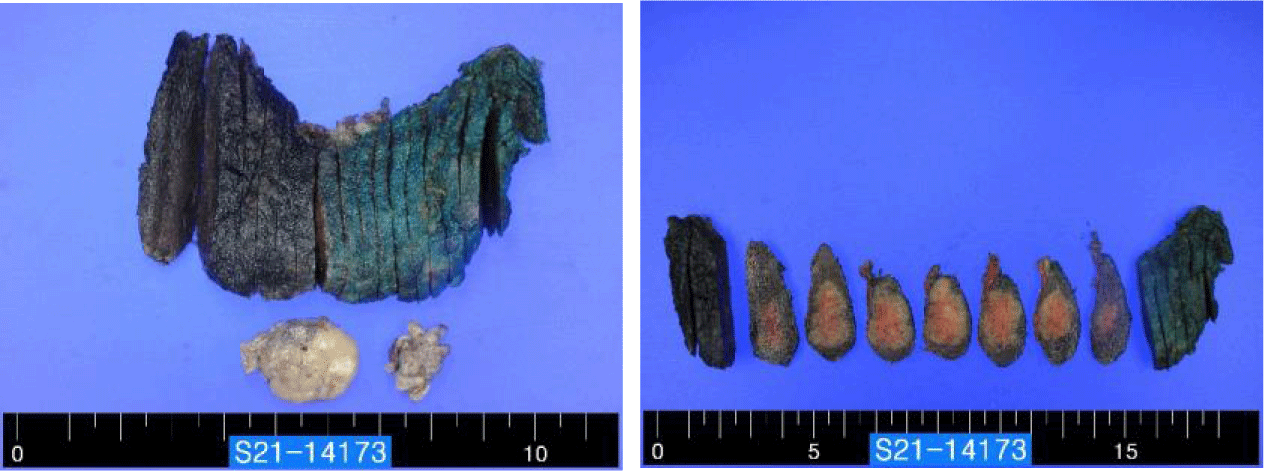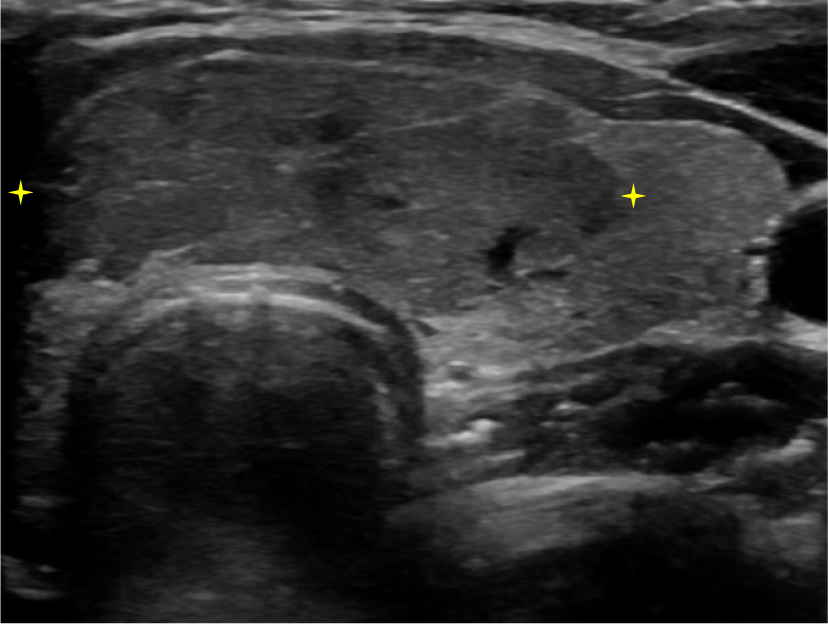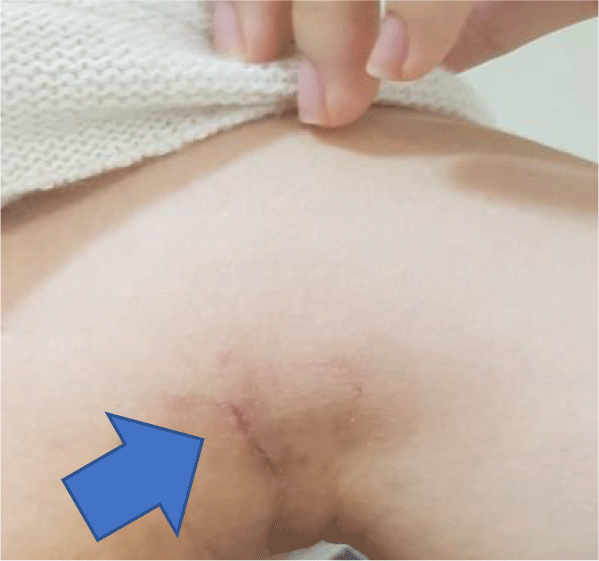Introduction
The incidence of thyroid cancer has risen over the past three decades in Korea [1]. This cancer is more common in women than in men and generally has a favorable prognosis [2], raising significant concerns about the quality of life after surgery. While conventional open thyroidectomy is a safe procedure, it has the drawback of leaving noticeable scars on the neck. Given the ongoing increase in thyroid cancer cases, particularly among socially active young women, the cosmetic implications of surgical treatment must be carefully considered [3].
Bilateral axillo-breast approach (BABA) robotic thyroidectomy was developed as an alternative technique for the removal of thyroid glands without making an incision in the neck. Its cosmetic advantages and surgical safety have been extensively documented. Typically, in BABA robotic thyroidectomy, the isthmus is divided early in the procedure to enhance the efficiency of the dissection during thyroid surgery [4]. However, there are safety concerns when performing this procedure on patients with thyroid cancer located in the isthmus. This report describes a case in which BABA robotic total thyroidectomy was successfully performed without dividing the isthmus in a patient diagnosed with isthmic papillary thyroid carcinoma (PTC).
Case presentation
A 24-year-old female patient presented to Ewha University Medical Center in August 2021 with a palpable mass in the anterior neck. Upon examination, a movable mass measuring 2.5 cm was detected in the thyroid gland's isthmus. Thyroid function tests were within normal limits, with free thyroxine at 1.23 ng/dL and thyroid-stimulating hormone at 2.50 mIU/L. Ultrasonography of the thyroid revealed a hypoechoic nodule in the isthmus, measuring 3.1×1.1 cm (Fig. 1). A fine needle aspiration biopsy was performed, confirming the diagnosis of PTC (Bethesda category VI). The patient was informed of the test results and the implications of surgery. Opting to avoid a visible scar from an open procedure, she chose BABA robotic thyroidectomy. Informed consent was obtained following a thorough discussion about the advantages and disadvantages of robotic thyroid surgery without division of the isthmus. The patient subsequently underwent BABA robotic total thyroidectomy with central compartment neck dissection for the treatment of isthmic PTC.
Skin flaps were marked, and diluted epinephrine was administered in the flap region for hydrodissection. Subsequently, skin flaps were elevated using a tunneler, and bilateral circumareolar and axillary ports were placed [4]. Following the standard flap dissection technique, we carried out en bloc resection of the entire thyroid gland, maintaining the integrity of the isthmus. The procedure was completed without the need for open conversion. The total operation time, defined as the duration from the initial epinephrine injection to the completion of skin closure, was 175 minutes, and the estimated blood loss was minimal (50 mL). The surgical specimen was removed through the site where the left axillary port was inserted, without the need to extend the incision (Fig. 2).
The patient's postoperative recovery was uneventful, and she was discharged on the third day following surgery, resulting in a total hospital stay of 5 days. The excised specimen included the right lobe of the thyroid gland, measuring 5.5×3×1.6 cm, and the left lobe, measuring 5×2.7×1.5 cm, with the entire gland weighing 29 g. The primary tumor was located in the lower portion of the left thyroid, extending through the isthmus to the lower portion of the right thyroid. Pathological examination revealed a 3.0×2.5 cm isthmic PTC and an incidental 0.3 cm microcarcinoma in the right thyroid gland. Two lymph node metastases were identified, each measuring 3 mm, without evidence of extracapsular extension. The resection margins were clear of disease (Fig. 3).

The patient underwent treatment with radioactive iodine, receiving a dose of 50 mCi of I-131. The postoperative examination revealed no complications, including transient hypoparathyroidism or injury to the recurrent laryngeal nerve. Following a 24-month follow-up period, the patient displayed excellent cosmetic outcomes, with the scar being barely noticeable.
Discussion
The anterior transcervical approach has been the standard method for thyroid surgery for over a century, following the introduction of modern thyroid surgery techniques by Sir Theodor Billroth and Theodor Kocher [4]. However, this approach inevitably leaves a noticeable scar on the front of the neck. Given that the incidence of thyroid cancer is increasing, particularly among younger women [2], these surgical scars can cause significant psychological distress [5]. In light of this, robotic thyroid surgery has emerged as an alternative to the traditional anterior transcervical thyroidectomy.
In conventional BABA thyroidectomy, the isthmus is divided with an endoscopic energy device. This step facilitates the lateral and posterior dissection of the gland, allowing for optimal visualization of the superior thyroid pedicle [6]. Additionally, the left axillary trocar site used for specimen retrieval is relatively small, typically 1−2 cm, which makes it challenging to extract the entire thyroid gland without additional incisions to enlarge the opening [6]. Consequently, there have been very few reported cases of BABA robotic total thyroidectomy performed without dividing the isthmus for large isthmic cancer, a technique aimed at ensuring oncologic safety and reducing complications.
Herein, we performed BABA robotic total thyroidectomy without isthmic division on a 3-cm isthmic PTC, ensuring oncologic and surgical safety. BABA robotic surgery may be a feasible and safe option for selected patients with isthmic tumors.


